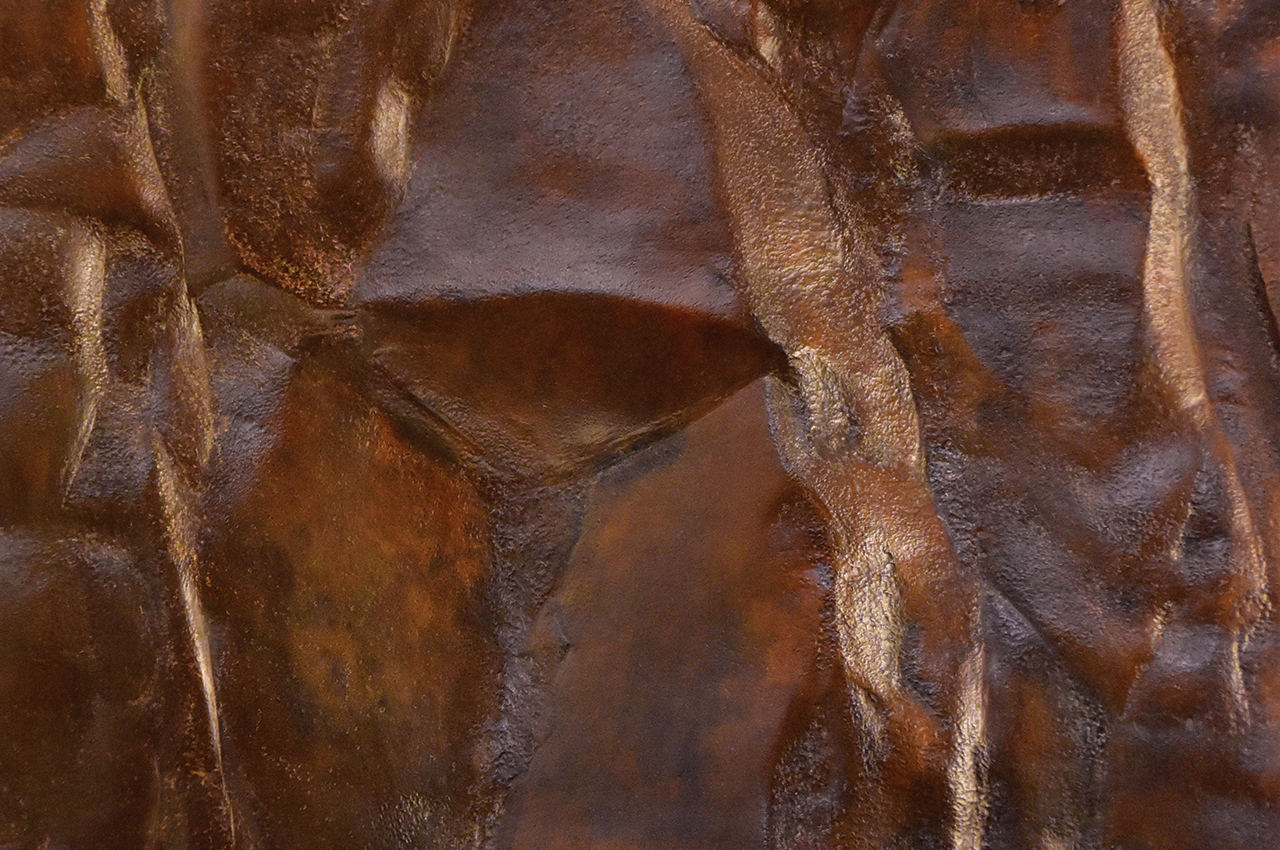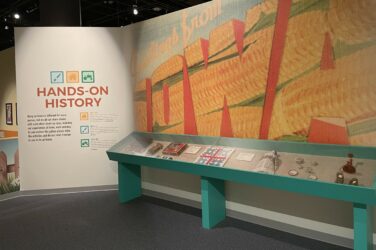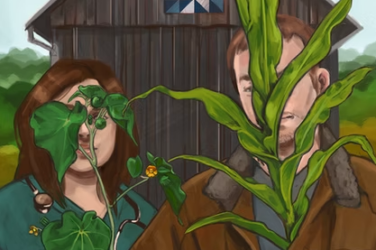Above: Detail of “Vessel” by Joe Muench, an ISU art and visual culture professor. The work explores the metallurgic history of Mines of Spain State Park near Dubuque.
Writer: Beth Eslinger
Sometimes nature inspires art in the most serendipitous of ways. For Iowa State University visual arts professor Nancy Thompson, it was a perfect sunset following a hailstorm that sparked one of her works for 20 Artists, 20 Parks, a celebration of the centennial anniversary of Iowa state parks.
As part of the project, professors and graduate students from ISU dispersed to state parks for artist-in-residence programs, creating works inspired by the visits. Each artist collaborated with the park’s ranger to study the flora and fauna, unique geology, and cultural and architectural features. “As a result of these combined activities, each park has a special focus placed on it, encouraging visitors to travel to the parks, revisit old favorites and seek out new, undiscovered treasures,” says metalsmithing expert Joe Muench, the artist-in-residence at Mines of Spain near Dubuque.
Thompson spent nearly a week at Lacey Keosauqua near its namesake town on the Des Moines River. Despite some of the worst flooding in recent history, the park provided numerous moments of beauty, including after that hailstorm, when the clouds were alight with oranges and pinks. She recreated the scene in pastel. In addition, Thompson painted a triptych of Wesley Creek—the park ranger’s favorite spot—and two other works.
For Muench, the Mines of Spain, a National Historic Site, was a natural fit—iron mining has occurred at the site for some 8,000 years. His three-dimensional steel diptychs “Passage” and “Vessel” record the experience of walking through a dramatic limestone canyon on the Horseshoe Bluff Trail.
Distinct Works
In addition to Muench’s metalwork and Thompson’s pastels, the works by the participating artists are as diverse as the parks themselves—there are paintings, photographs, sculptures, wood-turnings, textiles, video and more.
Thompson helped choose the professors and graduate students who participated in the project. While many are affiliated with the ISU College of Design, several come from other disciplines, including botany and soil sciences.
The Iowa Department of Natural Resources selected the project’s parks. Some artists requested particular parks, while others welcomed the challenge of a new environment. Each park ranger led private tours of their workplace. “The intention was to scope out the parks to find places that were special,” Thompson says.
At Backbone near Dundee, Iowa’s first state park, biological/premedical illustration professor Kimberly Moss explored the yin and yang of her subject matter. To show the macro side of the park, she burned isolines on a wood panel (think a topographic map). To illustrate the minute details, she added little doors that reveal realistic-looking bones, birds, insects, fish and plants.
“While hiking Backbone, I saw an array of wonderful things right at my feet—mushrooms, fossils, feathers, bones, insects and more that had such extraordinary forms, patterns and colors,” she says. “The longer you look at one organism, the more details you see, and you can begin to unravel how they exist in their habitat at Backbone.”
Alternative Art
Other artists opted for sensory ideas. For his Lake MacBride (Solon) project, architecture professor Firat Erdim recorded a kite choir, using vibrating metal strings to make music. Soil microbiologist Omar De Kok-Mercado and new media professor Austin Stewart recorded an entire moon cycle at Brushy Creek State Park’s prairie (near Lehigh); they manipulated the images into a series of videos. And former music professional and current design grad student Christopher Yanulis performed a song and created a mixed-media video, shot with his iPhone, to give an impressionist view of Pilot Knob State Park near Forest City.
The project resulted in meaningful connections—and creative collaborations. “I greatly enjoyed my involvement in the project, complete with on-site visits, including one with park ranger Elli Slouha on a steamy hot August day last summer,” Muench says. “I certainly appreciated her insightful information about the park, its history and its natural features.”
The Iowa Arts Council helped with grant funding and the continued promotion of the art. All the works “exhibit the natural wonders of Iowa,” says Veronica O’Hern, grant services and artist programs manager with the Iowa Arts Council. “This project shows how the arts can be used to celebrate the anniversary of the parks.
“It’s important to have ways to affect the quality of life through history, culture and nature,” she adds. “It’s why people choose to stay and live in Iowa.”
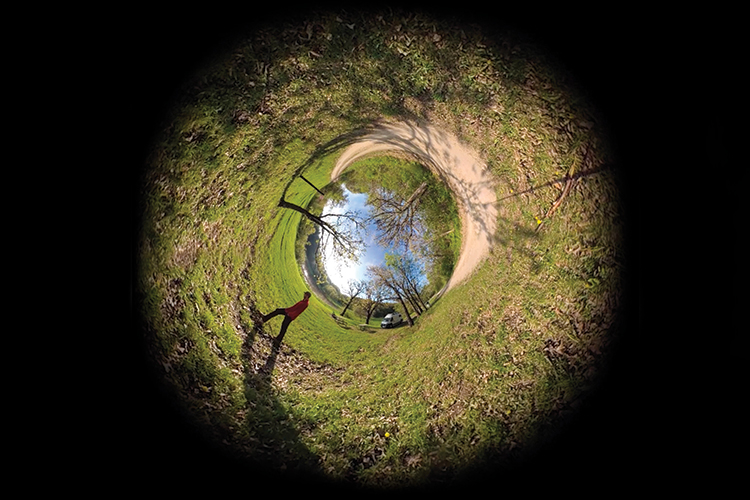
Video still from Colby Clark’s “Around the Park,” which gives viewers a 360-degree view of Stephens
State Forest near Chariton. Clark works with 4-H youth through ISU Extension.
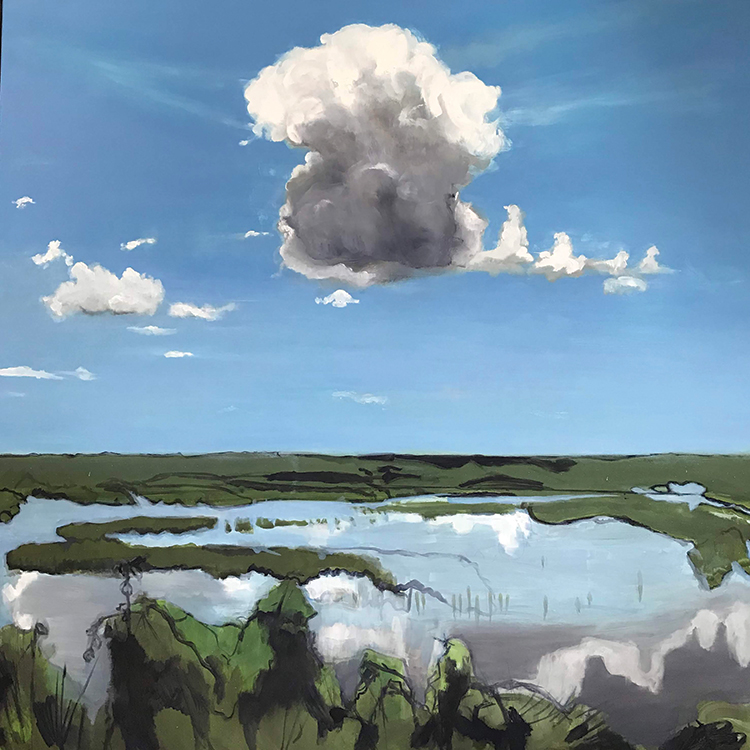
Artist and professor Barbara Walton borrowed part of her title “The Weight (I Wandered Lonely As A Cloud)” from a William Wordsworth poem. She painted the scenic Mississippi River vistas at Pikes Peak State Park near McGregor.
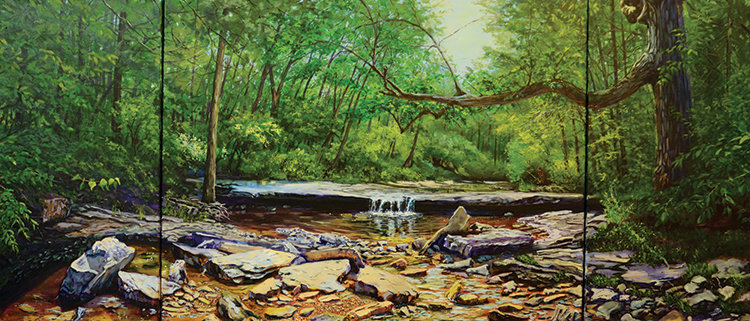
Artist and professor Nancy Thompson painted a favorite Lacey-Keosauqua State Park view in her
“Triptyich of Wesley Creek.” The park is near Keosauqua.
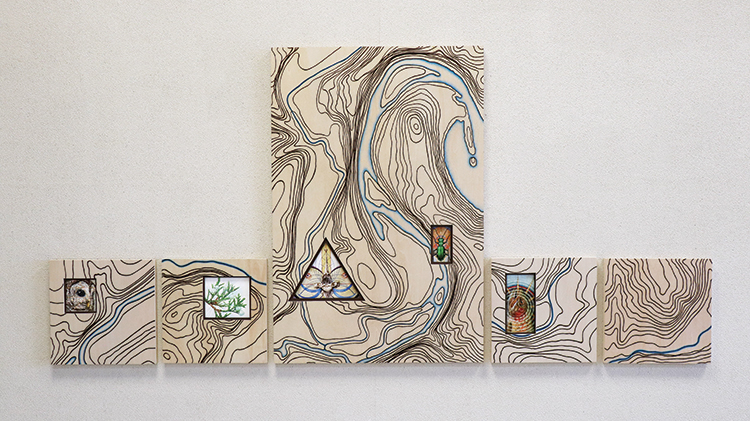
“Backbone Unearthed” by biological/premedical illustration professor Kimberly Moss explores the
larger topography and minute details found at Backbone State Park near Dundee.
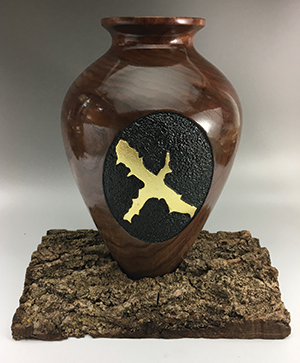
In his piece “The Beauty Within,” botany professor and woodworking expert Robert Wallace carved the shape of Lake Darling into his walnut vessel and filled the shape with gold leaf. His park, Lake Darling, is located near Brighton.
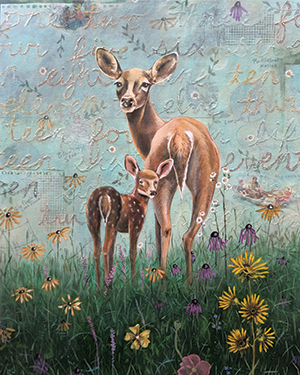
A drawing instructor, Anna Segner captured the magic of summer and memories of family camping trips in her piece “Midsummer.” She worked at Rock Creek State Park near Kellogg.


